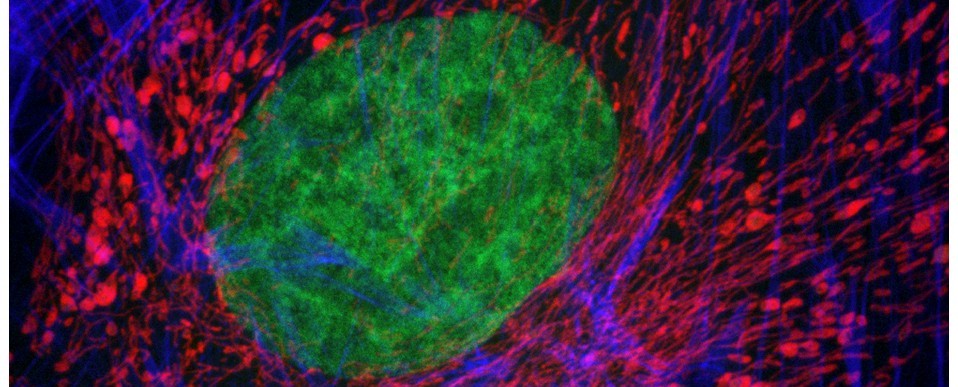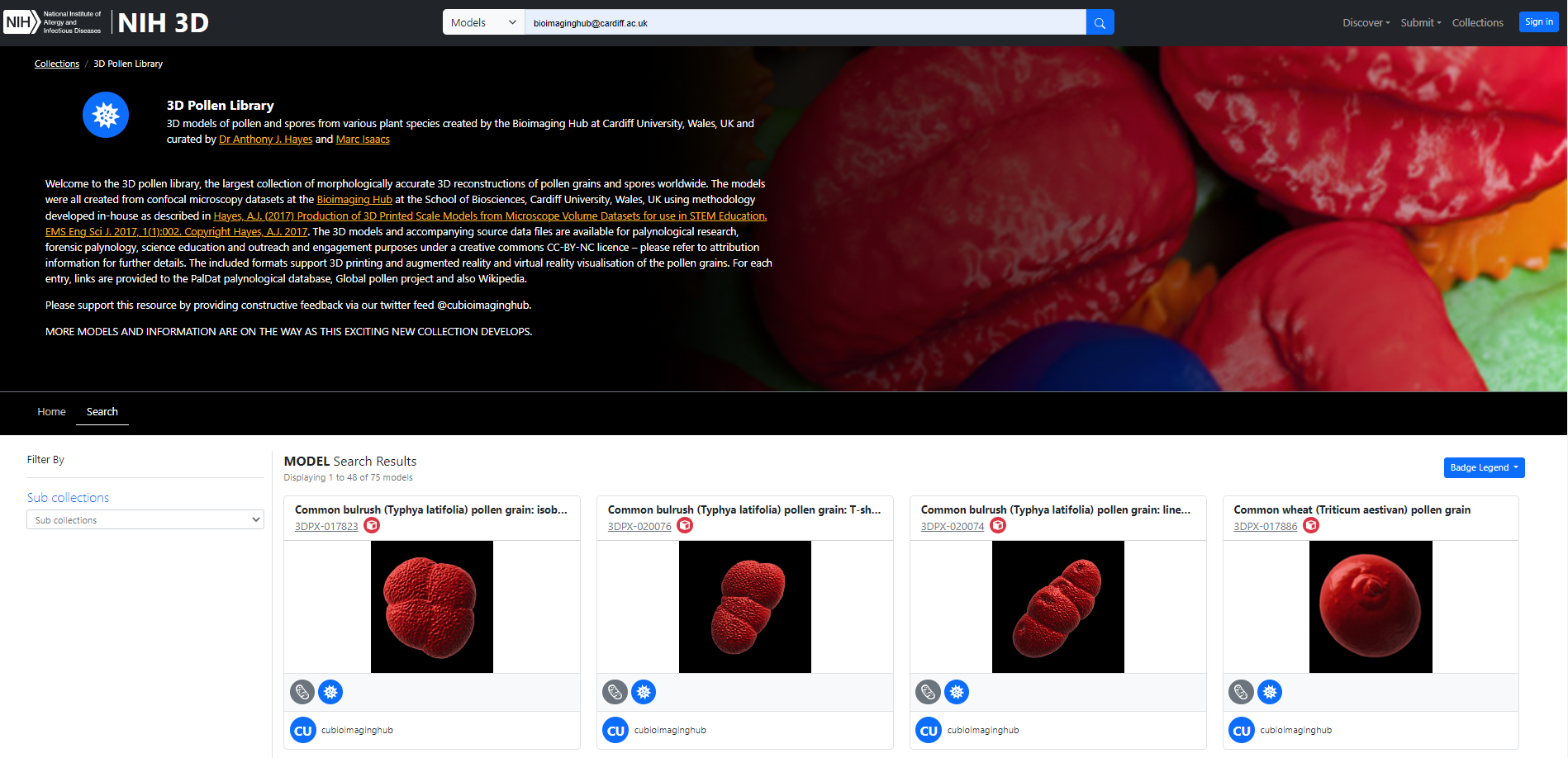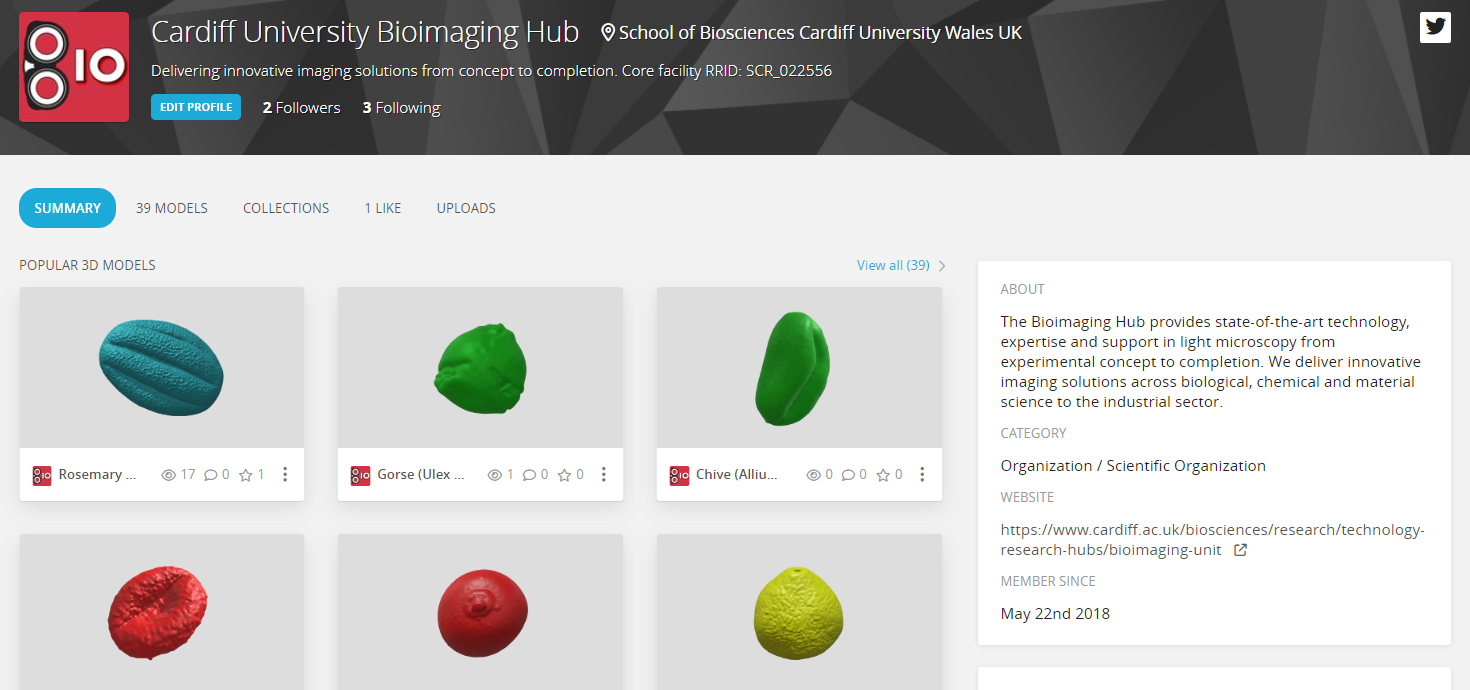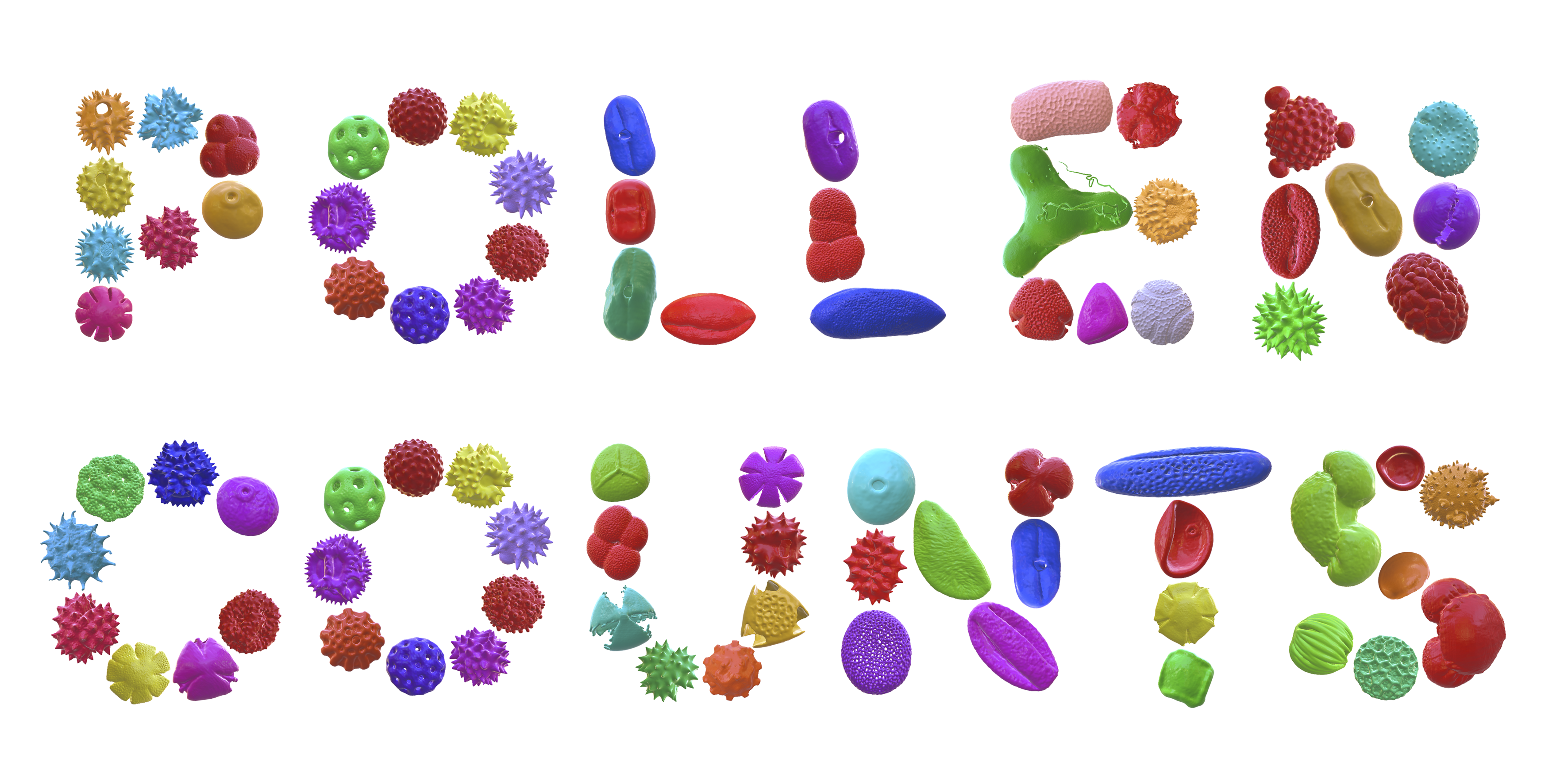 POLLEN COUNTS: The 3D Pollen Library Collection at NIH3D: from humble beginnings to the largest open source collection of 3D printable pollen models worldwide.
POLLEN COUNTS: The 3D Pollen Library Collection at NIH3D: from humble beginnings to the largest open source collection of 3D printable pollen models worldwide.
A fine dust to the naked eye, exquisite in microscopic form and fundamentally important to life on earth. Pollen grains contain the male gametes (i.e., sperm cells) from a flower’s anther that are essential for reproduction in seed-bearing plants thus are pivotal to the ecosystems and foods that we take for granted. As well as being critical to life, pollen records the evolutionary course of plant taxa in the geological strata, allowing scientists to understand and map environmental change; has relevance to forensic science, serving to establish links between objects, people and places; and represents a powerful allergen, causing hay fever in up to 30% of the world’s population. Without overstating the obvious, pollen counts!
Back in 2015, the Bioimaging Research Hub developed novel methodology that allowed us to 3D print scale models of microscopic pollen grains from confocal datasets, utilizing the autofluorescence from the outer wall, or exine, of the pollen grain. The 3D printed models generated via this procedure are morphologically accurate and highly scalable making them extremely useful tactile learning resources for science education, outreach and exhibition purposes.
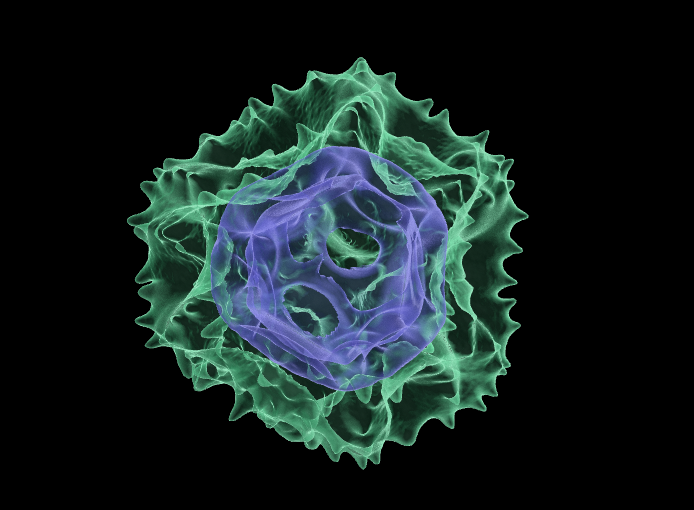
Above: Transparent 3D rendering of a dandelion (Taraxacum sp) pollen grain showing outer sculpted exine (green) and internal cage-like intine (blue) – just one of over two hundred pollen species represented in the Bioimaging Hub’s 3D pollen collection.
Following on from this initial work, I wrote a series of short blog articles (links below) where I showcased the technique by 3D printing scale models of microscopic pollen grains (see below). In 2017, I wrote up and published the work as a methods paper (link below) allowing other researchers to employ the technique to make 3D models of microscopic structures for use in their research, teaching and science outreach/engagement activities. Surprisingly, both the blogs and the paper generated a fair amount of interest at local, national and even international level, and we received a number of requests asking us to create 3D pollen prints and even curated collections for a number of science establishments (examples below). We therefore continued to add new pollen species to our growing repository whenever time permitted. By 2019, we had turned our attention to VR and had begun experimenting with this sensory modality as a way of physically manipulating our 3D digital models (both anatomical and microscopic) in virtual space using the Oculus series VR headsets and controllers, later developing workflows for their augmented reality visualisation using smart phones and tablets. You can read more about these developments in the links below.
We recently made the decision to make our entire back-catalogue of 3D pollen models available free of charge for non-commercial usage through the revamped NIH 3D site (formerly the NIH 3D Print Exchange) under a Creative Commons CC-BY-NC licence. The 3D models and all accompanying source data (Carl Zeiss Image .czi files) are available for download for palynological research, paleoarcheology, forensic palynology, science education and outreach and engagement purposes through the Bioimaging Hub’s 3D Pollen Library Collection. The included file formats support 3D printing and both augmented reality and virtual reality visualisation. For each entry, links are provided to the PalDat palynological database, Global pollen project, Pollen Wiki and also Wikipedia.
The Bioimaging Hub’s 3D Pollen Library Collection at NIH 3D
We have also showcased some of our 3D pollen models on the Bioimaging Hub’s Sketchfab site (see below). These can’t be downloaded directly, however you can manipulate the models on screen, customise lighting, textures etc and also view them in VR (further details below).
The Bioimaging Hub’s 3D pollen collection on Sketchfab
Please feel free to peruse and download some (or all) of our 3D models. We’d welcome constructive feedback with photographs via our LinkedIn page. This will allow us to continue to develop and improve these resources.
You can read more about the evolution of the 3D Pollen Library Collection at NIH3D through a recent article I wrote for the Royal Microscopical Society, link below.
AJH 29/03/23, updated 07/04/2025.
Further reading:
- Hayes, A.J. (2024). The 3D Pollen Library Collection at NIH3D: From humble beginnings to the largest open-source collection of online 3D pollen models worldwide. infocus Magazine 76 (Dec), pp. 4-17. DOI: 22443/rms.inf.1.277
- Perry, I., Szeto, J-Y., Isaacs, M.D., Gealy, E.C., Rose, R., Scofield, S., Watson, P.D., Hayes, A.J. (2017) Production of 3D printed scale models from microscope volume datasets for use in STEM education. EMS Engineering Science Journal. 1 (1): 002
- IN FOCUS: Bigging it up: 3D printing to change the shape of microscopy (February, 2016).
- IN FOCUS: Development of a 3D printed pollen reference collection (August, 2016)
- IN FOCUS: 3D Pollen prints not to be sniffed at: printing pollen for the met office (July, 2017).
- IN FOCUS: Immersive Microscopy: 3D visualisation and manipulation of microscopic samples through virtual reality (February, 2019)
- IN FOCUS: Plastic fantastic: making pollen models for the National Botanic Garden of Wales.(October, 2019)
- IN FOCUS: AR Palynology: probing the reality of nature/nature of reality (November, 2022)
